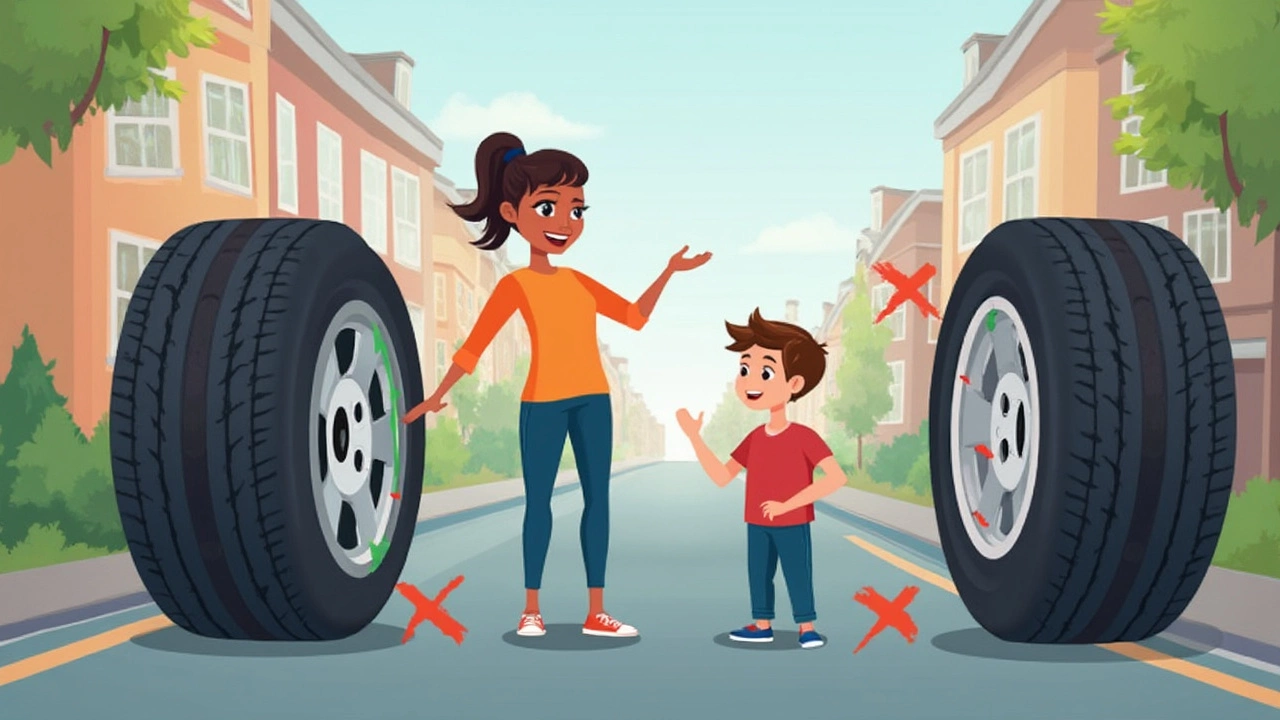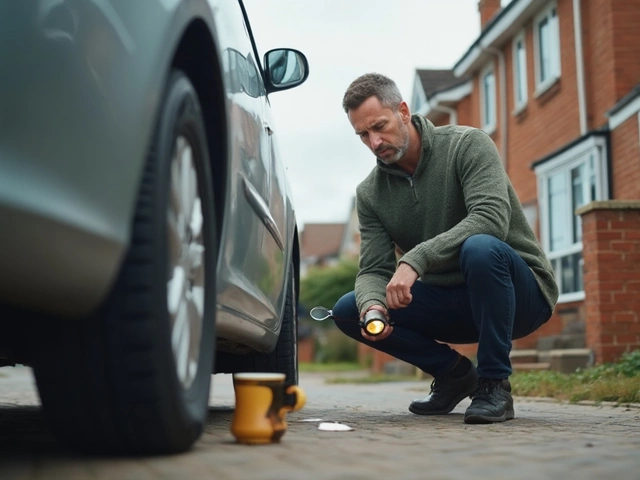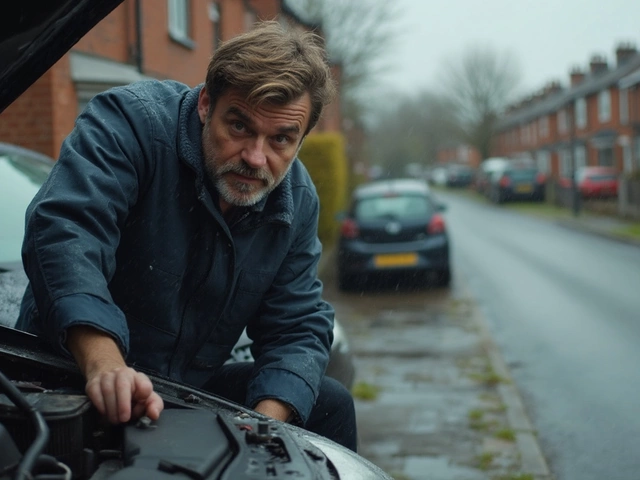You walk out to your car, and bam—one tire is flatter than a pancake. Naturally, you think: Is that it? Do I really have to shell out for a whole new tire? Hold up. Not every flat puts a nail in your tire's coffin (wordplay intended). Some flats can be patched up for the cost of a pizza. Others... not so lucky.
The trick is figuring out what kind of damage you’re dealing with. Is it a tiny nail in the center tread? Or is the sidewall ripped, or the tire shredded from driving on it too long? Where the damage is, and how bad it is, changes everything.
Before you start worrying about the hit to your wallet, let’s talk about signs that a flat is repairable versus when you have to say goodbye. You don’t want to get upsold when you really only need a $20 fix—happens more than you think, especially if you pull into a busy chain shop in a rush.
- How Flat Did It Go?
- What Makes a Tire Unfixable?
- Fix It or Toss It: Decision Time
- Preventing the Next Flat
How Flat Did It Go?
All flats aren't created equal. Sometimes it’s just a slow leak that leaves your tire looking a little saggy in the morning. Other times, your tire is so low it looks like it melted onto the driveway. How bad the flat is—literally, how flat did it go—tells you a ton about what might be going on under the rubber.
If the tire still has a little air, you might be looking at a small puncture or a loose valve stem. This is fixable most of the time if you spot it fast. But if the tire’s been completely flat for a while, the story changes. Driving on a flat can do real damage to the tire’s internal structure. If you drove even a short distance on a totally flat tire, the odds of saving it drop fast.
Here’s a quick guide to help you figure out what you’re facing:
- If the tire deflated overnight but you didn’t drive on it, there’s a better chance it can be patched.
- If there’s a visible cut, bubble, or you rolled on it while flat, you’re probably looking at a replacement.
- If you hear a hissing sound but the tire still holds most of its shape, you might just need a patch or plug.
Take a look at this table for a quick breakdown:
| Scenario | Repair Likely? | Notes |
|---|---|---|
| Nail in tread, tire still holds some air | Yes | Only if the puncture is in the main tread area |
| Sidewall puncture | No | Sidewall repairs are unsafe |
| Flat overnight, no driving | Maybe | If no severe damage to inside |
| Drove on flat tire | No | Possible hidden damage inside |
A general rule: if you can spot the problem and it’s small and in the tread, you’ve got a shot at a repair. But if it’s really flat tire with signs of worse damage—like cracks, bulges, or if the rim cut into the rubber—don’t gamble with your safety. Time for a new tire.
What Makes a Tire Unfixable?
Here’s the truth: not every flat tire can be repaired. It depends on where and how the tire is damaged. If there’s a hole or puncture in the tread (that thick strip that hits the road), and it’s no bigger than about a quarter-inch across, you’re usually in luck—a simple patch or plug will get you back on the road. But there are certain deal breakers you can’t ignore.
If the tire’s sidewall is cut, bubbled, or has a chunk missing, there’s no fix for that. The sidewall flexes a lot when you drive, and patches just don’t hold. Same goes for punctures right at the edge where the tread meets the sidewall. Shops call this the "shoulder," and almost everyone refuses to repair anything there. It just isn’t safe.
- If the tire was driven on while completely flat, the inside might have hidden damage that you can’t see. A pro can spot crushed cords or warping, and if they find this, that tire is toast.
- Sidewall damage is always a no-go: no plugging, no patching, nothing. The risk of a blowout is too high.
- Big rips, holes larger than ¼ inch, or multiple close-together punctures are also red flags. Too much damage in one area weakens the tire.
- If the tread is worn down past the minimum depth (that’s 2/32” in the US—just stick a penny in the tread, upside down. If you see all of Lincoln’s head, it’s done), there’s no point in repairing. Even a fixed tire with bald tread is unsafe.
Sometimes, you’ll see a slow leak from the valve stem or the rim. If the tire itself isn’t damaged, a tech can usually just replace the valve or reseal it—no need for a new tire. But if there’s any sign of internal structure damage, it’s replacement time, no questions asked.

Fix It or Toss It: Decision Time
This is where you need to make the call. Can your flat tire be fixed or is it time for a replacement? Here’s the stuff that actually matters.
- If the puncture is in the main tread area (not the sidewall), chances are it can be repaired—most tire shops use professional plugs or patches that seal holes up to about 1/4 of an inch in diameter. Anything bigger, or if the hole is jagged, that repair’s out the window.
- Damage on the sidewall, near the edge, or on the shoulder of the tire means it’s pretty much game over. The rubber there isn’t designed to hold a patch, and fixing it is unsafe, no matter what you hear on YouTube.
- If you’ve driven on the flat tire for more than a couple blocks, check for signs of rim damage or shredded rubber. If the tire looks warped, lumpy, or has cords showing, don’t even try to save it. That one’s toast, and your rim could be at risk too.
- Have your mechanic pop the tire off the rim—water or air bubbles will let them spot sneaky leaks missed by the naked eye.
If everything checks out and the fix is possible, repairs can usually be done in less than 20 minutes at most garages. If they tell you it’s a no-go, ask them to show you the spot and explain. A legit shop should have nothing to hide. And hey, if you feel pressured to buy a new tire and something doesn’t sit right, get a second opinion. Better safe (and maybe richer) than sorry.
Preventing the Next Flat
One flat tire is enough to ruin anyone’s day. But a few simple steps can keep you from dealing with another one anytime soon. Most flats happen because of things you can actually control—like air pressure, ignored damage, or letting your tires wear down to nothing.
The main trick is just being a little nosy with your tires. Check them every couple of weeks, or at least when you fill up the gas. Here’s what works best:
- Check air pressure: Most leaks start slow, and driving with low pressure wears tires out way faster. Look inside your driver’s door for a sticker with the right PSI and use a cheap gauge.
- Look for stuff stuck in the tread: Nails, screws, glass—you name it. Catching it early can save the tire before it goes totally flat.
- Don’t ignore weird wear patterns: If one part of a tire looks more beat up, your alignment or suspension might be off. That makes flats way more likely.
- Rotate your tires: Doing this every 5,000-7,500 miles helps them wear out evenly.
- Avoid potholes and junk: It might sound obvious, but they cause a ton of flats and make hidden damage easy to miss.
If you’re into numbers, here’s how much of a difference these habits can make:
| Habit | Average Tire Life Increase |
|---|---|
| Keeping pressure correct | Up to 4,700 more miles |
| Regular tread checks | Reduces risk of flats by 20% |
| Rotating tires on schedule | Adds about 6,000 miles overall |
Plenty of flat tires still happen out of nowhere, so toss a working spare and jack in your trunk even if you’re careful. I always show Jasper where the jack is, just in case. You never know when a quick tire fix will save you hours waiting on roadside rescue.


